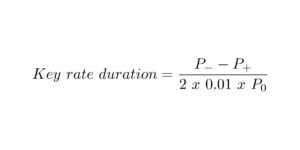The Korea Stock Exchange (KRX): What Is It?
Part of the much larger Korea Exchange (KRX, or the Exchange), is the Korea Stock Exchange. The stock market in Korea used to be a separate entity. The Korea Exchange was formed in 2005 with the merger of the Korea Stock Exchange, Korea Futures Exchange, and the electronic market, KOSDAQ.
The exchange, which offers markets for stocks, bonds, stock index futures, stock index options, and equity options, is the only securities exchange operator in South Korea. KRX maintains an office for cash markets and control in Seoul in addition to its headquarters in Busan.
The History of the Korea Stock Exchange
The Korea Stock Exchange has operated on its own since its founding in 1956. The Korean Securities Dealers Automated Quotations (KOSDAQ), a trading platform like its American counterpart, Nasdaq, of the National Association of Securities Dealers (NASD), was established by the Korea Stock Exchange prior to its merger in 2005 to become KRX.
The exchange achieved several notable milestones, including the introduction of electronic trading, the creation of a stock index futures and options market from 1996 to 1997, the introduction of warrant trading in 2000, and the introduction of equity options and exchange-traded funds (ETFs) in 2002.
Currently, equities, bonds, exchange-traded funds (ETFs), and real estate investment trusts (REITs) are among the instruments that investors can trade on the exchange. More than 1,000 well-known businesses are included in the KOSDAQ, such as SK Broadband, Daewon Media, Macrogen, Imagine Asia, Korea New Network, FNC Entertainment, and Genie Music.
The Korea Stock Exchange: How Does It Operate?
A total of 2,448 firms with a $2.6 trillion market capitalization (market cap) were listed on the KRX in 2021.
The typical trading sessions of other global main stock markets are essentially the same. 9:00 a.m. is when trading opens and closes at 3:30 p.m. With the exception of Saturday, Sunday, and holidays, of of which there will be 11 in 2021, the market is open every day of the week. The Korea Composite Stock Price Index (KOSPI), like the S&P 500 in the US, is an index that monitors the state of the market.
The KOSPI, or Korea Composite Stock Price Index,,
Every common stock that is traded on the exchange is included in the KOPSI. When the KOSPI was first released in 1983, it had a $100 base value. As of May 2021, the index was trading at about $3,188.
Similar to other significant indices, KOPSI is based on market capitalization and has a daily trading volume of more than several hundred million shares.
The index has multiple offshoots that follow different market caps, factor techniques, and industry sectors. For instance, the stock market division’s 200 largest companies make up the KOSPI 200 Index. As of 2021, electronics behemoth Samsung Electronics, automaker Hyundai Motor, and chemical manufacturer LG Chemical are among the largest holders in the KOPSI.
Korea Stock Exchange: A Look Into Trading
Exchange-traded funds, which offer instantaneous diversification in a single investment traded on a U.S. stock exchange, are the simplest way to invest in South Korea. There are three significant ETFs that track the South Korean market. The Franklin FTSE South Korea ETF (FLKR) and the Korea KOSPI 200 ETF (HKOR) are two more options in addition to the iShares MSCI South Korea ETF (EWY). Both large and midsized businesses can take advantage of this focused access to Korean stocks.
Advantages of Putting Money Into South Korea
International investors are drawn to South Korea’s economy because of its unique blend of stability and quick growth rates.
- Growing quickly: From 2021 to 2026, the South Korean economy is predicted to expand at a pace of 2.3% to 3.6% annually.
- Stable economy: With an annual per capita income of more than $30,000 and membership in the Organization for Economic Co-operation and Development (OECD), South Korea’s economy is very stable and qualifies as a G20 member.
Investing in South Korea May Carry Risks
Before investing money in the area, investors need to to take into account a number of hazards. For instance, there is a chance that the three biggest economic sectors in Korea—technology, financial services, and automobiles—could face difficulties that may cause market instability.
- Geopolitical risk: South Korea has a highly unstable neighbor in North Korea and is located in one of the world’s most militarized areas.
- Dependency on exports: The economy of South Korea is largely dependent on exports, which may not be a good thing in times of global economic recession.
Conclusion
- The Korea Stock Exchange used to be its own stock market, but now it’s a part of the much bigger Korea Exchange (KRX).
- KOSDAQ is KRX’s electronic trade tool. It’s like the Nasdaq in the U.S. The KOSPI, like the S&P 500, shows how healthy the exchange is.
- Some people are interested in South Korea’s economy because it is stable and growing quickly.
- But there are a lot of risks that buyers should think about before putting money into the area.
- Exchange-traded funds are the best way to put money into Korea.














































